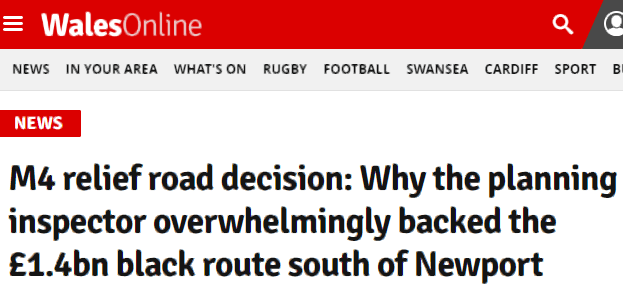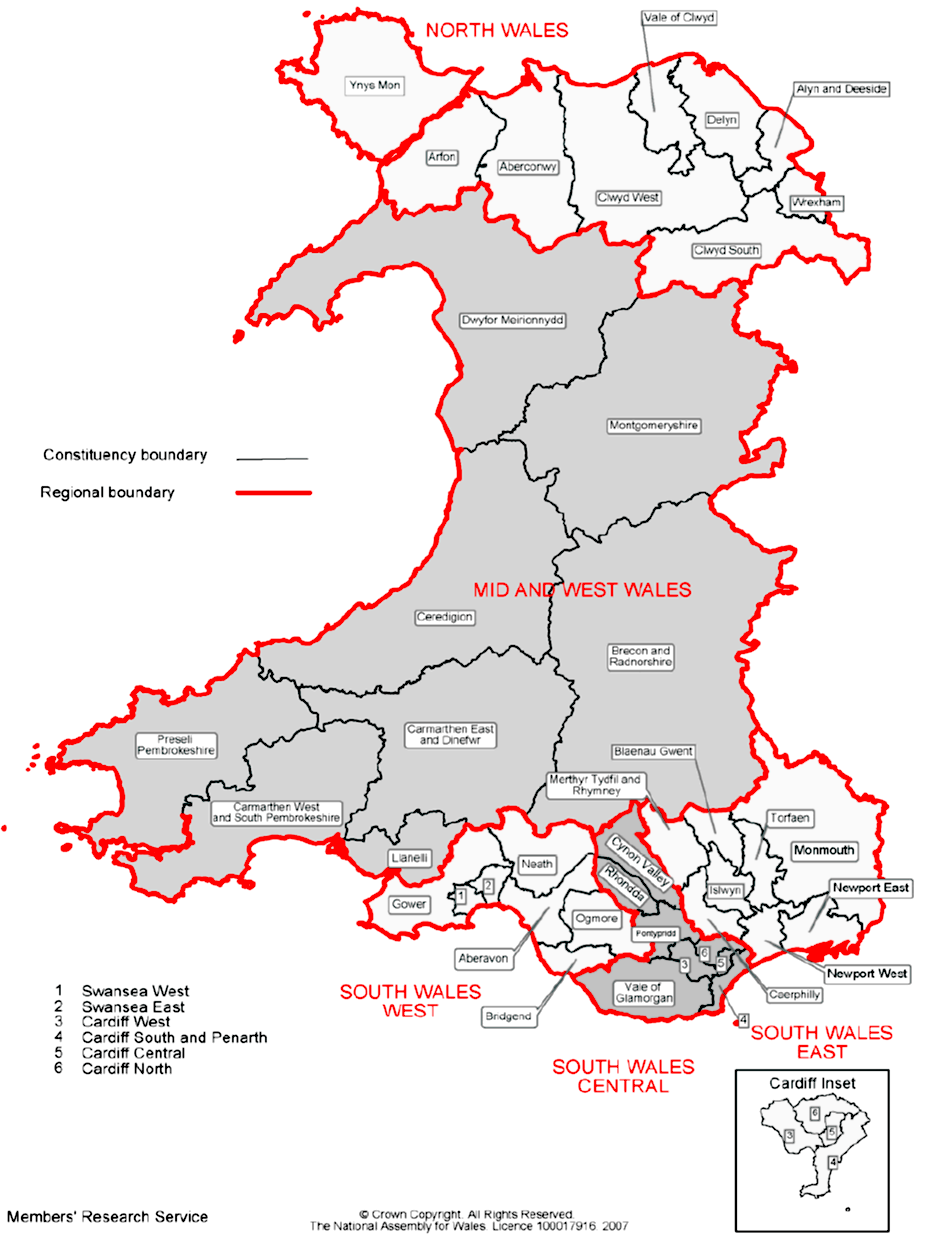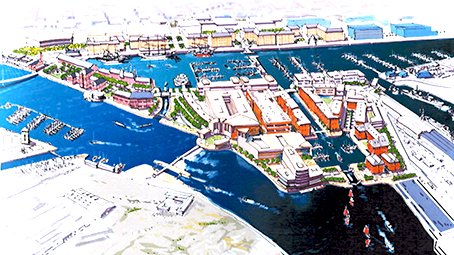My intention was to start winding down this blog, spend more time with my wife, grand-children, books, Malbec . . . but things keep cropping up. That said, it’s very unlikely I shall undertake major new investigations. Diolch yn fawr.
♦
![]() The previous post was a cri de coeur from someone who by chance had learnt that she is to have a wind farm plonked on her doorstep. Which is often how people find out.
The previous post was a cri de coeur from someone who by chance had learnt that she is to have a wind farm plonked on her doorstep. Which is often how people find out.
Because in the early stages of wind farm projects those pushing them like to tread carefully, and operate in the shadows. Which encourages skulduggery and often results in what can only be described as corruption.
Yes, I know, that will shock and surprise many of you. But it happens, even here, in planet-saving, refugee-welcoming, men-with-cervixes accepting Wales; where self-absorbed nobodies flit about the Bay out-mwahing each other as they await the next ishoo over which to drool and became instantly knowledgeable.
♦
BACKGROUND
I must begin with a sizeable recap, because if you don’t understand what has gone before then you’ll have difficulty making sense of what’s happening now. And what is likely to happen in the future.
About three years ago I was contacted by people in central Powys who were fighting against the imposition of a wind farm. What resulted from that approach was Corruption in the wind? in November 2018.
This was followed up in August 2020 with, Corruption in the wind 2, Labour snouts in the trough.
The story began with the strange case of Hendy Wind Farm, not far from Llandrindod. To cut a long story short . . .

Planning permission was refused by Powys County Council in April 2017, at a meeting where there occurred an episode worth recounting. (And here I lift a section from my November 2018 offering.)
‘Back in 2017, on April 27 to be exact, there was a curious scene played out at a meeting of Powys County Council’s planning committee. At a point in the meeting after the committee had refused planning permission for Hendy and was about to discuss further conditions for Bryn Blaen, a woman who had been sitting with the developers tried to hand a note to one of the committee members.
The woman had to be forcefully ushered away. She was recognised as a lobbyist, working for Invicta Public Affairs, a company based in Newcastle-upon-Tyne . . .
It was Anna McMorrin, who had been recruited by Invicta in October 2016 for no reason other than she was a Labour Party insider, having joined the party when she was a student, and as a result of her subsequent career she knew exactly who to approach to get things done.
While she was working for Alun Davies they began an affair which resulted in both leaving their long-term partners. They now live together.
In the general election of June 2017 Anna McMorrin was elected Labour MP for Cardiff North.’
When McMorrin became an MP her profile obviously increased, and she could hardly be expected to raise the hopes of elderly councillors by slipping them billets-doux during planning committee meetings.
A replacement would have to be found.
Inevitably, the Hendy developers appealed against the council’s decision but the appeal was dismissed by a planning inspector in May, 2018. Then, just five months later, Lesley Griffiths, Energy, Planning and Rural Affairs Secretary for the self-styled ‘Welsh Government’ over-ruled the planning inspector.
Here’s the letter Lesley Griffiths sent to Keith McKinney of Aaron and Partners LLP, a firm of Chester solicitors acting for the developers Hendy Wind Farm Ltd. Which is directly owned by DS Renewables LLP and ultimately owned by U + I Group Plc.
You’ll note that Griffiths says the justification for her overruling the planning inspector is that Hendy Wind Farm is a Development of National Significance (DNS).
Yet Wales already produces roughly twice as much electricity as we consume, with the extra going to England for no remuneration. So Hendy and all the other developments planned cannot be in the Welsh national interest. Which means they must be in the national interest of England or the UK.
Suggesting that Wales is being lumbered with an unfair and disproportionate number of the UK’s wind farms. Take Scotland out of the calculation and it becomes even more obvious that Wales is suffering an excessive number of wind turbines in order to protect English landscapes.
But it’s OK, because this exploitation is presented as little old Wales saving the planet.
It’s unusual for a minister to overrule the Planning Inspectorate. And because the Planning Inspectorate plays by the same DNS rule-book Griffiths’ decision made a number of people suspect that other factors or influences might have been at play.

And then . . . it was noticed that Labour insider David James Taylor had slipped on to the stage. Was he the replacement for Anna McMorrin?
In this website – put up I assume by objectors – Taylor’s company Moblake is named as working for the developers. Though as I’ll explain in a minute, there are two Moblake companies. And Taylor’s connection to those developers goes beyond Moblake.
Taylor is described in this piece as a ‘Former Labour spin doctor’. To give you some more information I shall shamelessly lift a section from last year’s piece:
‘Back in the early part of 2009 a bright lad in the Labour Party launched a website attacking his party’s political opponents. The site’s name cleverly linking the names of Labour icon Aneurin Bevan and national hero Owain Glyndŵr. As background music it even employed Tom Jones’s Delilah.
How we laughed!
But it all came unstuck and caused the bruvvers considerable embarrassment. First Minister Rhodri Morgan was particularly irked because Plaid Cymru leader Ieuan Wyn Jones had been portrayed as a clown. In normal circumstances this wouldn’t have mattered, but Labour was in coalition with Plaid Cymru at the time.
The website itself has long disappeared into the ether, but this old blog will give you a flavour. Though the Aneurin Glyndŵr Twitter account lives on.
The photo below shows Taylor canvassing for Lesley Griffiths in the 2016 Assembly elections along with some kids shipped in from England.
Around the same time he stood as the Labour candidate for the North Wales PCC post, but lost. Which would have left him looking for a suitably remunerative position.

Taylor had worked as a spad for Peter Hain when the Sage of the Serengeti was Secretary of State for Wales, and has also served as head cook and bottlewasher to former Labour Assembly Member Leighton Andrews.
Taylor joined the party while still in nappies and chaired his local constituency association before leaving kindergarten. In short, he is Labour through and through, and is very well connected in the Welsh branch of the UK Labour Party.
Additionally, he’s from the north east, and knows Lesley Griffiths personally.
◊
WHAT A BUTE!
There is something of a changing of the guard in 2017/18. Not only do we see Taylor taking over from McMorrin as the Labour Party / lobbyist presence but those originally behind Hendy wind farm are overshadowed by new players.
The linkage between the new and the old can be found in the company originally named Windward Generation Ltd, then Bute Energy Ltd, and finally, RSCO 3750 Ltd.
The first two directors were Oliver James Millican and Lawson Douglas Steele, both using the address of the Edinburgh Solicitors’ Property Centre at 90a George Street. They were joined 6 days later by Steven John Radford of Hendy Wind Farm Ltd.
Radford left in December 2019 and in the same month Stuart Allan George joined. Millican, Steele, and George will dominate this narrative from now on through a galaxy of companies under the Bute Energy umbrella.

To help you make sense of it I offer this table, with working links, that shows the various companies involved at the outset of the Hendy scenario and how, since they appeared on the scene, Millican, Steele, and George seem to be planning wind farms – now renamed ‘energy parks’ – all over Wales.
Since April 2020 there have been 20 new companies. Most of them location specific. See how many you can identify.
Earlier I mentioned David Taylor’s two companies called Moblake. These are Moblake Ltd (formerly Moblake Wind Ventures Ltd), and Moblake Associates Ltd. Despite the suggestion in the name of the second, Taylor is the sole director of both.
The latest unaudited financial statement for Moblake Ltd (not to be confused with audited accounts) show a healthy balance of £765,000. The ‘Nature of business (SIC)’ says that this company deals in ‘specialised construction activities’.

The Moblake companies were formed a week before Lesley Griffiths wrote to the developers’ solicitor advising that the Hendy Wind Farm was going ahead. What a coincidence!
Which I find curious. For Taylor has neither qualifications nor experience in the field of construction. I’ve read somewhere that he took time out from being a political fixer to study cyber security in the USA.
To further the pretence of Welsh involvement in or benefit from these projects Bute has recruited or appointed a Welsh Advisory Board headed by former Labour MEP Derek Vaughan.
UPDATE 15.10.2021: We now learn from her entry on the Register of Interests that senior Labour MS Jenny Rathbone‘s partner is a member of the Advisory Board.

This is John Uden.
What expertise does he bring? Or is his real benefit that he’s the partner of a Senedd Member who sits on the Climate Change, Environment, and Infrastructure Committee?

Having touched on Taylor’s background, it’s worth adding that Millican, Steele, and George have never driven a digger for Wimpey either. Their expertise is in real estate and equities.
Which raises a number of possibilities.
Until he discovered an interest in wind turbines Millican was a director of companies under the Parabola label. Companies such as Parabola Estate Holdings Ltd, operating out of the same London address as his more recent wind farm ventures.
A director of this and many other companies is 72-year-old Peter John Millican, who I assume to be the father of 40-year-old Oliver Millican.
Given that Millican junior is in ultimate control of all the wind farm companies I can’t help wondering whether he has really branched out on his own or whether he’s still working for daddy. Or perhaps fronting for someone else.
To summarise, we have the three musketeers from Caeredin, and their man on the ground in Wales, David Taylor, none of whom has any obvious background in engineering or renewables. Nor are they believed to be card-carrying members of the Greta Thunberg Fan Club.
Which suggests to me that they’re just in it for the money. With that money assured through being able to influence the ‘Welsh Government’.
For it wasn’t Taylor’s sparkling repartee that persuaded the Bute gang to make him a member of Grayling Capital LLP, and a shareholder in Windward Enterprises.
All of which leads me to wonder if this lot will erect a single wind turbine.
Because having apparently secured the rights to so many sites all they need do on each is spend a few thousand for a planning application and, once that’s secured, each site becomes worth millions.
And we are talking tens of millions of pounds, possibly nine figures, for a total outlay of less than a million pounds, and without having to do any real work.
Not far from Hendy Wind Farm, nearer to Llangurig, we find Bryn Blaen. A modest affair of 6 turbines with a tip height of 100m and a potential output of just 14.1MW. This too was launched by Steven John Radford, the man behind the Hendy project.
The latest accounts (to 30 September, 2020) show ‘Tangible assets’ of £35,567,344. And this figure has been reduced by the estimated cost of removing the turbines when their days are done, and restoring the site.

Though I predict it will be a hard job getting those responsible to restore wind farm sites. We might see companies locating offshore, as we saw with those seeking to avoid cleaning up opencast coal sites. A famous example being Celtic Energy.
Incidentally, Celtic Energy was advised by M & A Solicitors, which changed its name to Acuity Law and then advised Stan ‘The Pies’ Thomas on his notorious acquisition of public land.
I wrote about it back in the early part of 2016, with Pies, Planes & Property Development, soon followed by Pies, Planes & Property Development 2. ‘Planes’ refers to Stan and his brother Peter selling Cardiff airport to the ‘Welsh Government’ for a ludicrously high price.
When dealing with the ‘Welsh Government’ the Thomas brothers adhere to the old maxim, ‘Sell high, buy low’. With which the ‘Welsh Government, apparently, agrees.
Acuity Law still does a lot of work for Whatshisname and his gang. God help us!
Let’s conclude this section with a bit more information on Bryn Blaen. Radford and other directors left the company in February 2020. They were replaced by Stephen Richard Daniels, Edward William Mole, Benjamin Alexander Phillips, and Roger Skeldon.
Together, the three for whom I’ve provided links, hold 1,647 directorships, and a hell of a lot of the companies are dissolved.
It might be worth keeping an eye on Bryn Blaen.
◊
IT COULD HAVE BEEN SO DIFFERENT
Consider this: We have a ‘Welsh Government’, and it wants to fight climate change by covering Wales in wind turbines.
The obvious course to have taken would have been to build up a Welsh renewables industry. Welsh companies could have been formed, could have grown and prospered; created jobs, built up local skills, and put wealth into local economies.
Had this been done we could today have Welsh companies erecting wind turbines around the world. Using highly-skilled Welsh technicians and engineers. Bringing money back to Wales.
But no.
Instead, our colonial elite behaved like procurers, offering Wales up to foreign investors and companies for them to do with as they wished. The former sometimes based in tax havens, the latter often state owned, such as Sweden’s Vattenfall, which owns our largest wind farm, Pen-y-Cymoedd.
But it will get worse before it gets better. Because in some ways Bute Energy’s plans may represent the last hurrah for increasingly discredited onshore wind.
The next scam is tree planting. Which is why . . .
When independence is seen to approach the first priority must be to seal off Corruption Bay and block all escape routes. Then flood the place. Have gangs of likely lads at each exit to mercilessly deal with anyone trying to get out.
Because . . . can you imagine giving more power, and more money, to those we find in that nest of vermin? The jumped-up councillor politicians, their spads, and other hangers-on; the third sector parasites dreaming up new ‘problems’ they can use to bleed us dry; the (unregistered) lobbyists; the civil servants taking orders from London; the enviroshysters and other ‘influencers’ directing ‘Welsh Government’ policy.
They must all be swept away.
If independence offers nothing but devolution on steroids, then here’s one lifelong nationalist who will reject it. My independence, whilst being free of ideological pre-conditions, demands a fresh start, with a different model, and in a new place.
A new system that works for the Welsh people, not against us.
♦ end ♦












































































